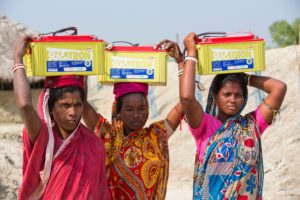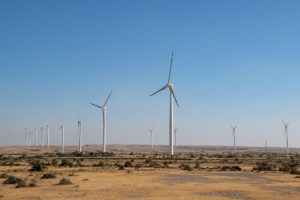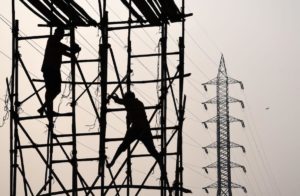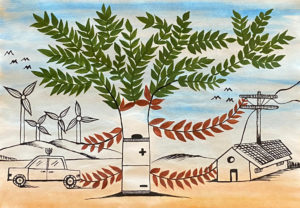In an ironic comment on the COP27 process in Egypt, one of this year’s most significant climate initiatives was not announced at the UN climate summit. On 15 November, the G20 Leaders’ Summit in Bali launched a USD 20 billion Just Energy Transition Partnership (JETP) with Indonesia. As the fourth most populous country in the world, which generates about 60% of its electricity from a fleet of relatively young coal power plants, a clean energy transition for Indonesia has global repercussions, and was described by a US official as “probably the single largest climate finance transaction or partnership ever”.
Indonesia’s JETP follows the USD 8.5 billion JETP with South Africa launched at COP26. There has also been a push for India and Vietnam to become involved in the process. India, with its huge population and increasing carbon emissions – it is either the third-most polluting country, or the fourth political unit, depending on how one measures the European Union – would be the big prize. The Indian government has demurred so far, and its Long-Term Low-Carbon Development Strategy (LT-LEDS) presented at COP27 goes some way to showing why.
The LT-LEDS can basically be summarised into three sections: (i) a strategy to build more renewable-based energy generation, thereby lowering the intensity of carbon emissions per unit of energy produced; (ii) the adoption of emerging technologies such as electric vehicles, bio-fuels, green hydrogen and (controversial) carbon capture and storage and (iii) a social movement that would drive lower consumption through the promotion of “traditional”, low-consumption lifestyles. The last has no real metrics, and is somewhat at odds with the energy generation focus of the first two. Nonetheless, what all three share is an absolute avoidance of phasing out coal-based power generation.
Coal in India is here to stay
There is no energy transition here, merely a promotion of renewable energy and its more efficient use alongside more coal-based power generation. In fact, over the past year India increased its coal-based power generation by 10% (alongside an increase in renewable energy by 21%). Almost three-quarters of India’s energy is produced by coal plants, and while the aggressive adoption of renewable energy may lower its overall contribution to the Indian economy, total emissions are not on a downward trajectory.
One of the most important reasons is jobs. A few months ago, I was among a group of climate and environment journalists invited to a closed-door session with a senior Indian politician on India’s energy transition. One of the key questions the politician asked was how to sell the energy transition. His point was that, as an elected representative, his main responsibility is to his constituents – and their main demand is jobs.
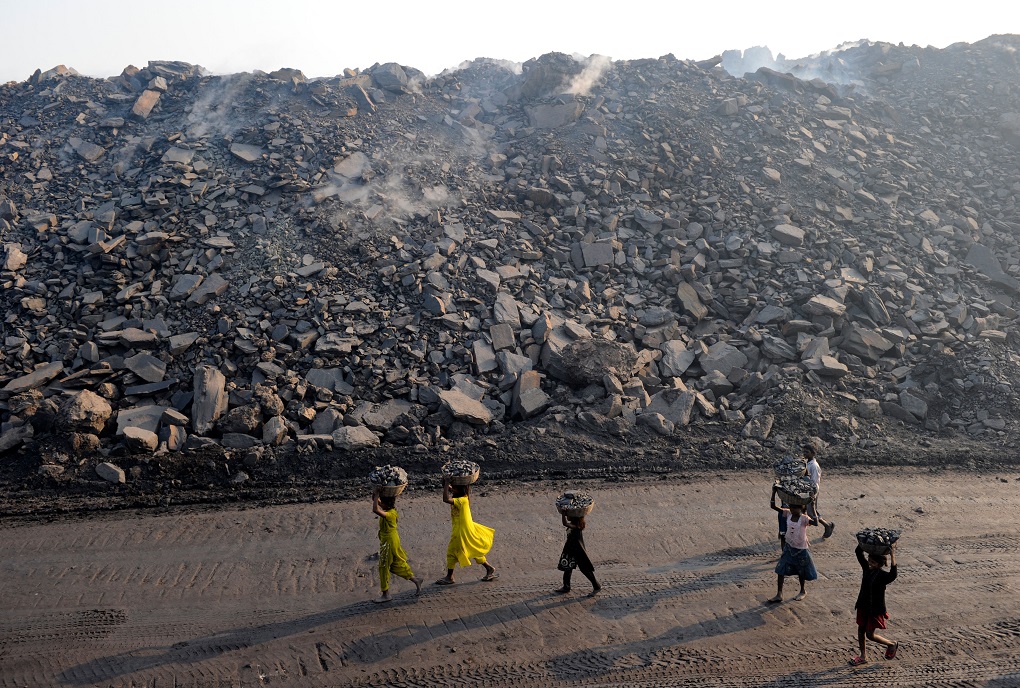
This is a major sticking point. Coal India Limited is the largest government-owned coal production company in the world, and the third-largest employer in India. It employs just under 300,000 people directly, with about another million jobs coming from the private sector and ancillary enterprises. Adding in the informal sector, the industry affects millions more people working in six relatively poor Indian states. This does not account for the jobs created in coal transshipment by rail – another government-owned enterprise that is the largest in the world in its sector. In fact, the railways use the heavy freight charges for coal to subsidise rail travel.
Many of these jobs are neither dignified nor well paying, but in a country with a large and growing population, any steady job is welcome.
Furthermore, there is an important distinction between India and Indonesia. Indonesian territory accounts for about 40% of the world’s geothermal energy, of which maybe 5% has been tapped. Indonesia has the option to wean itself off of coal while still expanding energy supply and creating high-quality jobs. Although India is rapidly expanding its renewable energy capacity, this is a long slog, with issues of resolving base power – when the sun is not shining or wind blowing – rather than a potentially quick switch.
No political consensus to underpin a just transition
There is also an important distinction between South Africa and India, in that the South African government has focused on the energy transition as a way to move away from its troubled past. The “Just” part of the JETP is very important, and the creation of a Presidential Climate Finance Task Team is politically important in a country that wants to “address present and historical inequality, creates jobs, relieves poverty, enables resilience to climate impacts and energy instability, provides access to affordable electricity, and leaves no one behind”. While the South African JETP has come under scathing criticism for failing on some of these objectives, and empowering the private sector at the cost of a public undertaking that could deal with some of these issues, the criticism itself has been built around these political claims.
In India, no such political consensus exists. In fact, the same companies that are the leaders in investing in renewable energy such as solar power are often involved in conflicts over land for coal mining.
Moreover, there is a concern that has come out of the criticism from South Africa’s experience, which is how “just” exactly are the JETPs? Although the exact numbers are unavailable, reporting indicates that only about 4% of the USD 8.5 billion will be in the form of grants, with the rest primarily in loans, adding to the country’s debt burden. And even USD 8.5 billion pales in comparison with the 1.5 trillion South African rands (USD 98 billion) the country needs over the next five years for its transition. Similarly, Indonesia needs an estimated USD 37 billion just to shut down its coal fleet, without even accounting for building new energy infrastructure.
A concern that has come out of the criticism from South Africa’s experience is exactly how “just” are Just Energy Transition Partnerships?
The number being spoken of when it comes to India’s JETP is USD 80 billion, but once again it is unclear how much of it is in grants or loans. It is understandable that India is resistant to taking on a larger debt burden, or as is often said, “Paying to solve a problem it has not made, with money it does not have”.
Nonetheless, it is worth asking if the current trajectory of Indian investment is designed to deal with the challenges of a changing climate. India has written off more than USD 123 billion of bad debt in the last five years alone, most of it from public sector banks – tax money. While it is unknown how much of this was in the coal sector, a December 2019 report by the Institute for Energy Economics and Financial Analysis estimated that India had USD 40-60 billion in thermal plants that were “stranded assets”. In a telling quote, it noted that “According to the World Resources Institute, ~40% of India’s current thermal capacity is located in water-stressed areas, with water shortages leading to losses in electricity generation and significant revenue losses for power producers.”
With more scientific evidence on the inequality of the impact of climate change becoming available, it is entirely just for countries like India to demand that the countries most responsible for the crisis pay up, rather than merely increase the burden. That said, an energy transition may simply make sense from a domestic perspective, and for purely good investment reasons.
Hope is in bottom-up change in India
Without a clear government action plan, alternatives for jobs or energy generation, or a political consensus, the road to a just energy transition in India looks incredibly hard. And yet, despite its current approach of merely continuing its energy expansion, India may be creating the conditions for bottom-up change. In January 2022, a joint report by the Council on Energy, Environment and Water, the Natural Resources Defense Council and Skill Council for Green Jobs estimated that the solar and wind sectors had created a workforce of 111,400 and further estimated that if India were to achieve targets of 101 GW wind and 238 GW solar energy by 2030, this would create about 3.4 million short and long-term jobs, and result in a million stable jobs in the renewables sector.
That number would rival the number directly employed by the coal sector, creating a large political demand that would challenge the current status quo. What is more interesting is where many of these jobs are located. A report released by Power for All in September 2022 identified about 80,000 jobs created by the decentralised renewable energy sector in India.
For decentralised energy specifically, the jobs are often in rural areas where demand is higher, as grid electricity is either not available or is unreliable. Moreover, in contrast to less mature markets in Sub-Saharan Africa, in India the demand is for mini grids or standalone commercial or industrial solar systems rather than basic solar home systems. This meant that the people employed were often much higher skilled (71% of the workforce), and these systems themselves would have the positive knock-on effects of boosting industry and livelihoods in rural areas.
Given its size, diversity and competing political claims, it is often said that change happens in India despite, rather than because of, the government. The deeply protectionist approach that the country adopts on the global stage, while disappointing, is not the whole story. Small, cascading changes happening on the ground may be a far better metric of how the country is transforming.
